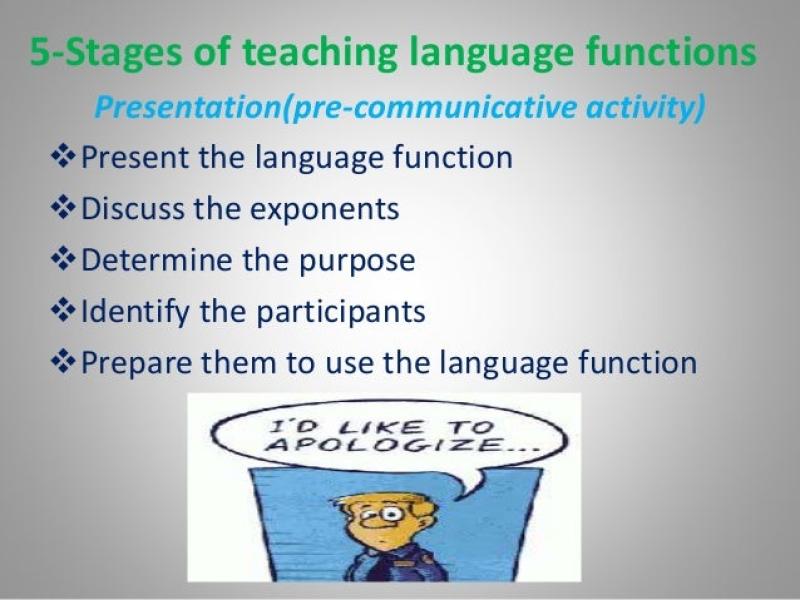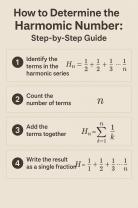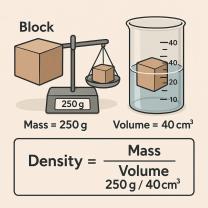How to use language functions to teach and learn English?
Language functions refer to the various purposes or communicative goals that language serves in different contexts. Integrating language functions into English language learning can be an effective way to teach and learn English because it emphasizes practical, real-life communication skills. Here are some strategies to enhance English language learning with language functions:
Identify Key Language Functions:
- Begin by identifying essential language functions relevant to daily communication, such as requesting, giving opinions, comparing, describing, persuading, apologizing, etc.
Contextualized Learning:
- Introduce language functions within meaningful contexts. Use real-life situations or scenarios that students are likely to encounter, making the learning experience more authentic.
Task-Based Activities:
- Design task-based activities that require students to use specific language functions. For example, role plays, debates, interviews, and problem-solving tasks can be effective ways to practice language functions in context.
Authentic Materials:
- Incorporate authentic materials like articles, videos, and audio clips that naturally showcase the use of language functions. This exposes learners to how language is used in real-world situations.
Scaffolded Instruction:
- Provide scaffolded instruction by breaking down language functions into manageable steps. Begin with simple tasks and gradually increase complexity as students become more proficient.
Modeling:
- Model the use of language functions through teacher demonstrations or video examples. This helps students understand the appropriate language structures and expressions for each function.
Collaborative Learning:
- Encourage collaborative learning activities where students work together to achieve a common communicative goal. This fosters interaction and allows for the practice of language functions in a social context.
Feedback and Reflection:
- Provide constructive feedback on students' use of language functions. Encourage reflection on their performance and guide them in identifying areas for improvement.
Vocabulary Building:
- Connect language functions with relevant vocabulary. Introduce and practice vocabulary that is commonly associated with specific language functions, helping learners build a more extensive and practical lexicon.
Integration with Grammar:
- Integrate the teaching of grammar within the context of language functions. This helps students understand the grammatical structures in meaningful ways and reinforces their application in communication.
Technology Integration:
- Use technology to enhance language function learning. Online platforms, interactive apps, and multimedia resources can provide engaging and interactive opportunities for students to practice language functions.
Cultural Awareness:
- Incorporate cultural aspects into language function lessons. This helps students not only understand the linguistic elements but also the cultural nuances associated with effective communication.
Assessment:
- Assess language functions through a variety of assessment tools, including performance tasks, presentations, and written assignments. This ensures that students can apply what they have learned in authentic situations.
By integrating language functions into English language teaching and learning, educators can create a more dynamic and practical language learning experience, helping students develop the skills they need for effective communication in real-world contexts.
Language learning strategies: How to use language functions to teach and learn English?
Language functions are the purposes for which we use language. They include things like asking questions, giving instructions, expressing opinions, and telling stories. When we teach English using language functions, we are helping students to develop the ability to use the language in real-world situations.
There are a number of ways to use language functions in the English language classroom. One way is to focus on a specific language function each week or unit. For example, you might focus on the language function of "giving instructions" one week, and then on the language function of "asking for and giving directions" the next week.
Another way to use language functions in the classroom is to integrate them into other activities. For example, if you are doing a reading comprehension activity, you could ask students to identify the different language functions that are used in the text. Or, if you are doing a writing activity, you could ask students to focus on using a particular language function in their writing.
Here are some specific examples of activities that you can use to teach and learn English using language functions:
- Guess the language function: Give students a sentence or a short dialogue and ask them to guess what the language function is. For example, you could say "Can you pass the salt?" and ask students to guess that the language function is "making a request."
- Role-plays: Role-plays are a great way for students to practice using different language functions in real-world situations. For example, you could have students role-play a situation where they are ordering food at a restaurant or asking for directions.
- Games and puzzles: There are a number of games and puzzles that can be used to teach and learn English using language functions. For example, you could play a game with students where they have to race to complete a task using a particular language function.
Incorporating language functions in English language instruction for effective learning
Incorporating language functions into English language instruction can be an effective way to help students learn the language. Here are some tips for doing so:
- Identify the language functions that are most relevant to your students' needs. What are their goals for learning English? What kinds of activities do they engage in in their daily lives? Once you have identified the most relevant language functions, you can focus on teaching those functions to your students.
- Provide students with opportunities to practice using language functions in a variety of contexts. This could involve role-plays, games, puzzles, and other activities.
- Give students feedback on their use of language functions. This will help them to identify their strengths and weaknesses and to improve their use of the language.
Here is an example of how you could incorporate language functions into an English language instruction lesson:
- Topic: Ordering food at a restaurant
- Language functions: Making requests, giving instructions, expressing preferences
Lesson plan:
- Introduction: Begin by asking students what they know about ordering food at a restaurant. What are some of the different things that they might say?
- Teaching: Review the different language functions that can be used when ordering food at a restaurant. For example, students might use the language function of "making a request" to order food or drinks. They might use the language function of "giving instructions" to tell the waiter or waitress how they would like their food cooked. And they might use the language function of "expressing preferences" to tell the waiter or waitress what kind of food they like or don't like.
- Practice: Provide students with opportunities to practice using the language functions that they have just learned. For example, you could have students role-play a situation where they are ordering food at a restaurant. Or you could give students a menu and ask them to order a meal using the correct language functions.
- Assessment: At the end of the lesson, assess students' understanding of the language functions that they have learned. You could do this by asking them to complete a worksheet or by giving them a quiz.
Tips for educators and learners to enhance language skills through language functions
Here are some tips for educators and learners on how to enhance language skills through language functions:
Educators:
- Choose the right language functions: When teaching language functions, it is important to choose the functions that are most relevant to your students' needs and interests.
- Plan activities: When planning activities to teach language functions, it is important to make sure that the activities are engaging and that they provide students with opportunities to practice using the language functions in a variety of contexts.
- Assess progress: It is important to assess students' progress in using language functions so that you can identify any areas where they need additional support.
Learners:
- Set goals: When learning a new language, it is important to set goals for yourself.












